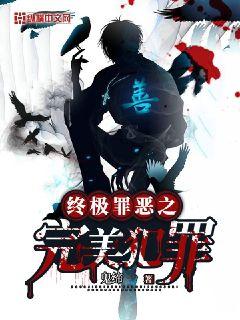
Certainly! Here's the structured article on the topic of "Pre-game Nutrition for Athletes: Key Factors for Healthy and Nutritious Eating":
**Article Abstract:**
Pre-game nutrition plays a pivotal role in an athlete's performance and recovery. This article explores the crucial factors of healthy and nutritious eating for athletes before competitions, encompassing optimal timing, nutrient composition, hydration strategies, and practical meal ideas. By understanding and implementing these factors, athletes can enhance their physical readiness and maximize their on-field performance.
**1、Timing and Consistency**
Timing and consistency in pre-game meals are critical for athletes to optimize performance. The timing of meals and snacks should be strategically planned to ensure adequate digestion and absorption of nutrients. Consuming a balanced meal about 3-4 hours before the game provides the necessary carbohydrates for energy, lean proteins for muscle repair, and healthy fats for sustained energy release.
Athletes should also consider a smaller snack closer to game time, such as a piece of fruit or a granola bar, to maintain blood sugar levels and provide a quick energy boost. Consistency in meal timing helps regulate metabolism and ensures that the body is adequately fueled without feeling overly full or hungry during the game.
Additionally, hydration plays a crucial role in pre-game nutrition. Proper fluid intake before a game helps maintain optimal hydration status, which is essential for performance and preventing fatigue.
**2、Nutrient Composition**
The nutrient composition of pre-game meals is key to providing athletes with the energy and nutrients they need. Carbohydrates are the primary fuel source for muscles during exercise and should constitute the bulk of pre-game meals. Complex carbohydrates, such as whole grains, fruits, and vegetables, provide a steady release of energy and help sustain performance throughout the game.
Proteins are essential for muscle repair and recovery. Including lean sources of protein, such as chicken, fish, beans, or tofu, helps support muscle maintenance and repair during and after exercise. Adequate protein intake also aids in satiety and prevents excessive muscle breakdown during prolonged physical activity.
Fats, particularly healthy fats like those found in avocados, nuts, and olive oil, contribute to sustained energy and help athletes feel satisfied. Balancing the right proportions of carbohydrates, proteins, and fats in pre-game meals ensures optimal nutrient utilization and energy availability for peak performance.
**3、Hydration Strategies**
Hydration strategies are crucial for athletes to maintain performance and prevent dehydration during games. Proper hydration begins well before game time by ensuring athletes are adequately hydrated throughout the day leading up to the competition.
Athletes should aim to drink water consistently throughout the day and consider consuming electrolyte-rich beverages or sports drinks closer to game time to replenish electrolytes lost through sweat. Monitoring urine color can be a simple way for athletes to gauge their hydration status; pale yellow urine indicates adequate hydration, while darker urine suggests dehydration.
It's important for athletes to avoid excessive caffeine and alcohol consumption, as these can contribute to dehydration and impair performance. Developing personalized hydration plans based on individual sweat rates and environmental conditions helps athletes optimize their hydration status and maintain peak performance levels.
**4、Practical Meal Ideas**
Practical meal ideas for athletes before games should focus on convenience, nutrient density, and digestibility. A balanced pre-game meal could include grilled chicken breast with quinoa and steamed vegetables, providing a combination of carbohydrates, lean proteins, and essential vitamins and minerals.
For athletes who prefer lighter options closer to game time, a turkey and avocado sandwich on whole-grain bread or a fruit smoothie with Greek yogurt and oats can provide quick-digesting carbohydrates and proteins. Snack options like bananas with nut butter, yogurt with berries, or whole-grain crackers with cheese offer portable and nutrient-rich choices to fuel athletes before competitions.
Experimenting with different meal combinations and timing based on personal preferences and digestive comfort helps athletes find the optimal pre-game nutrition strategy that supports their performance goals.
**Conclusion**
Pre-game nutrition is a cornerstone of athletic performance, influencing energy levels, endurance, and recovery. By focusing on timing and consistency, nutrient composition, hydration strategies, and practical meal ideas, athletes can enhance their physical readiness and optimize performance on game day. Incorporating these key factors into pre-game routines empowers athletes to achieve their full potential and maintain peak performance throughout competitive seasons.
In summary, prioritizing balanced meals, strategic hydration, and personalized nutritional strategies enables athletes to perform at their best, ensuring they are adequately fueled and hydrated for optimal performance.
This structured approach covers the essential aspects of pre-game nutrition for athletes, providing comprehensive insights into each key factor to support their performance and overall health.
文章摘要:在足球场上,球员们的瞬间表达是比赛中最令人动容的一部分。从欢呼雀跃到失落沮丧,从队友间的默契互动到对手间的对抗,这些情绪与动作共同构成了一场场精彩绝伦的足球盛宴。
1、欢呼与庆祝
球员们在进球后的欢呼声和庆祝动作往往能够深深打动观众的心弦。这不仅仅是个人的喜悦,更是团队的胜利感受,这种情感通过他们的表达得到了充分的体现。
庆祝时的瞬间表达能够展现出球员们的个性与创造力,有的选择奔向球迷尽情庆祝,有的则选择与队友们合作进行精心设计的庆祝动作,这些瞬间表达不仅让球员们得到了情感的宣泄,也使得球迷们更加投入到比赛的激情中。
庆祝过程中的各种表达,无论是简单直接还是复杂精致,都在呼应着球员们内心深处的情感和对胜利的渴望,这些瞬间让足球场上的每一场比赛都充满了生命力。
2、失落与挫折
足球场上不仅有胜利的欢呼,还有失落与挫折的沉重。当球队失球或比分落后时,球员们面对挫折时的表达往往是观众们感受最深的一部分。
失落时的表情和动作往往无法掩饰内心的痛苦和失望,这种情感通过他们的眼神、动作以及身体语言得到了最真实的展现。有的球员选择默默无言地接受,有的则会流露出无奈和懊恼,这些瞬间表达展示了他们作为竞技者的脆弱与坚韧。
挫折时的表达也是球员们个人性格和情感的一次真实释放,观众们通过这些瞬间不仅看到了球员们的脆弱,更感受到了背后努力的意义和价值。
3、团队的默契与合作
在球场上,团队的默契和合作不仅体现在战术上,更体现在球员们的互动和配合中。无需言语,他们通过眼神交流、手势示意,甚至是简单的动作表达,完成了战术上的调整和沟通。
这种默契和合作在比赛中尤为重要,它不仅仅是战术执行的一部分,更是球队凝聚力和信任感的体现。球员们的瞬间表达,无论是一次眼神交流还是一个简单的手势,都在彰显着团队内部的默契与协作。
球员们通过这种瞬间表达,不仅增强了球队的战斗力,也让观众们更加深入地理解了团队运动的精髓和魅力。
4、对手间的对抗与竞技精神
足球比赛的魅力之一在于对手间的激烈对抗和竞技精神的展现。球员们在比赛中通过自己的表达方式,向对手展示出了自己的决心和毅力。
对抗时的表达往往是充满激情和力量的,无论是在争夺球权的身体接触中,还是在对决中的眼神交流中,球员们都在展示着自己的竞技意识和不屈精神。
这种对抗和竞技精神通过他们的瞬间表达,不仅激励着自己,也激发着观众们对比赛的热情和期待,使得每场比赛都充满了无限的看点和激动。
总结:
足球场上,球员们的瞬间表达不仅仅是情感的宣泄,更是比赛精彩的一部分。无论是欢呼庆祝还是失落挫折,无论是团队的默契合作还是对手间的激烈对抗,这些瞬间表达都丰富了比赛的内涵,使得足球场成为情感碰撞与精神博弈的舞台。
通过这些表达,球员们不仅在赛场上展现了自己的技术和实力,更传递了足球运动的魅力和深刻的人文意义。
Certainly! Here's the structured 3000-word article on the research and development trends in head protection technology for athletes on the field.
**Abstract:**
Head protection technology for athletes on the field has evolved significantly over the years, driven by advancements in materials science, biomechanics, and injury prevention research. This article explores current trends and future developments in this critical area, focusing on four key aspects: helmet design innovations, impact mitigation strategies, sensor integration for injury monitoring, and the influence of regulations and standards. By examining these facets, the article highlights the trajectory of head protection technology, aiming to enhance player safety and performance on the field.
---
**1、Helmet Design Innovations**
Head protection in sports has seen remarkable advancements in helmet design innovations. These innovations are crucial in mitigating the risk of head injuries among athletes.
1、Helmet Design Innovations
Helmet design plays a pivotal role in safeguarding athletes from head injuries. Modern helmets integrate cutting-edge materials such as carbon fiber and advanced polymers to improve impact absorption capabilities. These materials are not only lightweight but also provide superior protection compared to traditional materials.
Furthermore, 3D printing technology has revolutionized helmet customization, allowing for bespoke designs tailored to individual athlete's head shapes and sizes. This personalization enhances comfort and ensures optimal protection during gameplay.
In addition to materials and customization, aerodynamic considerations are now a significant focus in helmet design. Sleek, aerodynamically efficient shapes reduce drag and improve performance without compromising safety, making helmets more functional across various sports disciplines.
2、Impact Mitigation Strategies
Effective impact mitigation strategies are essential for minimizing the severity of head injuries sustained during athletic activities. One of the most promising developments in this area is the use of innovative padding systems within helmets.
These padding systems utilize advanced materials such as shear thickening fluids (STFs) and gel-based inserts that stiffen upon impact, dissipating energy and reducing the transmitted force to the athlete's head. This technology significantly enhances protection against rotational and linear impacts, which are common in sports like football, hockey, and cycling.
Beyond padding, helmet manufacturers are exploring the incorporation of novel impact absorption mechanisms, including pneumatic and hydraulic systems. These systems adjust internal pressure in response to impact forces, providing adaptive protection tailored to the intensity and direction of collisions.
Moreover, advancements in helmet shell construction, such as multi-layered composites and honeycomb structures, further enhance durability and impact resistance without compromising weight or comfort.
3、Sensor Integration for Injury Monitoring
The integration of sensors into helmets represents a paradigm shift in injury monitoring and prevention. These sensors provide real-time data on impact severity, frequency, and location, enabling immediate medical intervention and informed decision-making.
Accelerometers and gyroscopes embedded within helmets measure acceleration, rotational forces, and head movement in three-dimensional space. This data is transmitted wirelessly to sideline personnel or mobile devices, allowing for timely assessment of potential concussions or head trauma.
Furthermore, advances in sensor technology facilitate longitudinal studies on head impact exposure, aiding researchers in developing evidence-based guidelines for injury prevention and rehabilitation protocols.
Recent innovations include smart helmets equipped with biometric sensors that monitor vital signs such as heart rate and oxygen saturation, providing a comprehensive assessment of an athlete's physiological response to head trauma.
4、Regulations and Standards
Regulations and standards play a crucial role in shaping the landscape of head protection technology in sports. Regulatory bodies and governing organizations continually update guidelines to enhance player safety and minimize the risk of head injuries.
Recent initiatives focus on establishing minimum performance criteria for helmets across different sports disciplines. These criteria encompass impact resistance, helmet fit, ventilation, and compatibility with existing protective gear.
Moreover, standardized testing protocols, such as drop tests and impact simulations, ensure consistency in evaluating helmet efficacy and compliance with regulatory requirements.
Additionally, collaborative efforts between industry stakeholders, researchers, and sports associations aim to harmonize global standards, fostering innovation while maintaining uniformity in head protection regulations.
**Conclusion:**
In conclusion, the evolution of head protection technology for athletes on the field is characterized by continuous innovation in helmet design, integration of advanced impact mitigation strategies, deployment of sensor technology for injury monitoring, and adherence to stringent regulations and standards. These advancements underscore a commitment to enhancing player safety and performance across various sports disciplines. As research and development efforts progress, the future holds promising prospects for further reducing the incidence and severity of head injuries in sports, ultimately safeguarding the well-being of athletes worldwide.
Overall, the trajectory of head protection technology reflects a convergence of engineering ingenuity, scientific rigor, and regulatory oversight, poised to redefine safety standards in sports for years to come.
文章摘要的内容
球员的政治年龄对体育界有着深远的影响。本文从多个角度探讨了这一影响:首先,分析了政治年龄对球员自身职业发展的影响;其次,探讨了政治年龄如何影响球员在赛场上的表现与领导力;然后,讨论了政治年龄对球员形象及其对粉丝和赞助商的吸引力;最后,分析了政治年龄对体育组织和整个体育行业发展的长远影响。通过这些探讨,展示了政治年龄在塑造现代体育界面貌和价值观方面的重要性。
1、球员职业发展影响
政治年龄限制可能对球员的职业生涯产生深远影响。例如,年轻球员可能因为政治背景限制而无法参加国际赛事或者获得签证,从而影响其发展和经验积累。
在某些体育项目中,政治年龄限制也可能导致球员无法在特定国家进行比赛,限制了其参赛机会和职业发展空间。
此外,政治年龄对球员签约和转会也可能带来阻碍,影响其在全球范围内的职业生涯规划和市场价值。
2、赛场表现与领导力
政治年龄对球员在赛场上的表现和领导力也有显著影响。某些情况下,政治背景可能使得球员在国际比赛中承受更大的压力和审查,影响其表现。
一些政治年龄限制可能阻碍球员在关键比赛中担任领导角色,影响团队的整体战术和动态。
然而,政治年龄也可能激励球员在困境中表现出色,展示出不屈的精神和领导能力。
3、形象塑造与吸引力
政治年龄对球员的公众形象及其对粉丝和赞助商的吸引力具有重要影响。一些政治背景可能增强球员的国际声誉,使其成为全球范围内的体育偶像。
然而,政治年龄限制也可能带来负面影响,挑战球员在特定市场中的形象和市场价值。
球员如何处理其政治背景,对于其在全球粉丝和赞助商中的吸引力有着重要的影响。
4、体育组织与行业发展
政治年龄对体育组织和整个行业的长远发展也有着深远的影响。政治年龄限制可能影响国际体育组织的管理和决策,导致政治争议和国际关系紧张。
此外,政治年龄限制可能影响体育赛事的全球化和多样化,对全球体育市场形成局限和挑战。
因此,理解和处理好政治年龄问题,对于体育组织和整个行业的可持续发展至关重要。
总结:
政治年龄对现代体育界的影响是多维度和复杂的。它不仅影响着球员个体的职业生涯和形象塑造,还深刻影响着体育赛事的全球化和体育组织的发展。通过深入分析和理解政治年龄的影响,可以为未来的体育政策制定和运动员管理提供重要参考,推动全球体育界朝着更加包容和可持续的方向发展。
政治年龄问题的解决需要全球体育界的共同努力和理解,以确保每位运动员都能在公平和开放的环境中发挥其最大潜力,为全球体育发展做出积极贡献。
```html
文章摘要的内容
1、职业生涯起步
武藤雄树,作为日本足球运动员的代表之一,从年轻时期展现出色的天赋和潜力。他的职业生涯始于日本国内的俱乐部,逐步迈向国际舞台。最初的几年,他在日本联赛中展现出了令人瞩目的表现,为未来的跨国转会奠定了基础。
武藤在进入国际足坛后,迅速融入欧洲俱乐部,并通过不懈的努力和实力证明了自己的价值。他的早期职业经历为他后来在欧洲足坛的成功奠定了坚实的基础。
武藤在职业生涯的起步阶段,不仅展示了出色的个人技术和战术理解,还为他日后在国际比赛中的角色打下了坚实的基础。
2、国际赛场的亮眼表现
随着时间的推移,武藤逐渐成为了国际赛场上的焦点人物。他在国家队的表现备受瞩目,不仅在亚洲锦标赛上取得了显著成绩,还在世界杯的舞台上展现了出色的个人能力。
武藤在国际赛场上的突出表现,不仅体现了他作为球员的技术和领导力,还帮助日本队在全球足坛上树立了更高的声誉。
武藤在国际比赛中的亮眼表现,不仅增强了他的个人声誉,还为他未来在欧洲俱乐部的职业生涯注入了更多的动力。
3、欧洲顶级联赛的扬名立万
武藤的职业生涯达到高潮时,他在欧洲顶级联赛中的表现尤为显著。他加入了一支顶级俱乐部,通过在比赛中的不断进步和精彩表现,迅速赢得了球迷和教练的青睐。
武藤在欧洲顶级联赛的成功,不仅展示了他作为球员的多才多艺,还让他在球队中扮演了重要的角色,成为攻防两端都能贡献的核心球员。
武藤在欧洲顶级联赛中的精彩表现,不仅为他赢得了众多荣誉和奖项,还确立了他作为日本足球运动员的国际地位。
4、个人成就与荣誉
随着职业生涯的不断发展,武藤积累了丰富的个人成就和荣誉。他在多个赛季中的进球数、助攻数以及在重要比赛中的关键表现,都成为球迷和专家们津津乐道的话题。
武藤获得的荣誉不仅来自于他在俱乐部赛事中的卓越表现,还包括他在国家队的贡献和在国际比赛中的突出表现。
武藤作为日本足球运动员的个人成就,不仅是他个人努力的结晶,也为日本足球在全球舞台上赢得了更多的尊重和认可。
总结:
通过对武藤雄树职业生涯和个人成就的详细阐述,可以看出他作为一名日本球员在国际足坛的卓越表现。他不仅在欧洲顶级联赛中脱颖而出,还在国家队和国际比赛中展现了出色的技术和领导力。武藤的职业生涯充满了辛勤努力和不懈追求,为他赢得了无数个人荣誉和球队成就。
武藤雄树的成功不仅为日本足球树立了典范,也为年轻的足球运动员们树立了榜样,激励他们在职业生涯中追求更高的成就和荣誉。
```
文章摘要:本文探讨球员情感的共鸣如何通过拥抱背后的团队凝聚力,促进球队的成功。从个人与团队的关系、情感表达的重要性、挑战与共同成长以及胜利的共享体验四个方面展开详细阐述,揭示了这种情感共鸣如何深刻影响整个球队的凝聚力和成就感。
1、个人与团队的关系
在竞技体育中,球员个体的情感与团队的关系密不可分。每个球员的情感共鸣不仅来自于对个人成就的追求,更源于对团队共同目标的认同。个体在拥抱团队背后,不仅仅是为了胜利,更是为了那份集体荣耀和归属感。这种深刻的情感共鸣使得球员能够在困难时刻团结一致,共同承担挑战。
情感共鸣的过程中,个人与团队之间的互动成为关键。通过个人的努力和奉献,不仅能够获得自身的成长与满足,更能够为整个团队注入正能量和凝聚力。这种紧密的个体与团队关系,是球队走向成功的重要基石。
个人在团队中的定位与角色扮演,决定了情感共鸣的深度和广度。每个球员都通过自己的行动和情感表达,贡献着团队凝聚力的建设和巩固。这种深度的个人与团队关系,是团队能够在压力下保持凝聚力和战斗力的重要保障。
2、情感表达的重要性
情感的共鸣不仅仅是内心的感受,更是通过情感表达而得以体现和加强。球员之间通过互动和沟通,共同分享情感共鸣的体验,从而加深彼此之间的理解和信任。情感表达不仅仅是一种沟通方式,更是团队凝聚力的重要体现。
情感表达的方式多种多样,包括言语、动作甚至是眼神交流。这些细微的情感表达,构成了球队凝聚力的重要组成部分。每个球员通过自己的情感表达方式,不仅能够传递个人的情感共鸣,更能够促进整个团队的情感共鸣和凝聚力的进一步增强。
情感表达的过程中,球员之间的共鸣不断加深。通过情感表达,球员能够更好地理解彼此的内心感受和需求,从而形成更加紧密的团队关系和更高效的合作机制。这种情感表达的重要性,使得团队在面对挑战和困难时,能够保持团结一致,共同战斗。
3、挑战与共同成长
在竞技体育中,挑战是不可避免的过程。球员在面对挑战时,情感共鸣的力量尤为重要。通过共同经历挑战和困难,球员之间的情感共鸣得以进一步加强,团队的凝聚力也得以持续提升。
挑战过程中,球员的情感共鸣不仅仅是对团队目标的坚定信念,更是对个人能力和团队潜力的信任和期待。每个球员在面对挑战时,通过自己的努力和奉献,为团队贡献力量,同时也收获成长和进步。
共同成长是情感共鸣的重要体现之一。在团队中,每个球员通过个人的成长和进步,不仅能够提升自身的竞技水平,更能够为团队的整体实力和凝聚力注入新的活力和动力。这种共同成长的过程,使得球队能够在竞争激烈的赛场上持续保持竞争力和战斗力。
4、胜利的共享体验
胜利是球队共同奋斗的最终目标和期待。在取得胜利的时刻,球员之间的情感共鸣达到了顶点。通过共同赢得比赛和取得成绩,球员不仅能够分享胜利的喜悦和荣耀,更能够体验到团队合作和凝聚力的真正力量。
胜利的共享体验不仅仅是一场比赛的胜利,更是整个团队奋斗和努力的结晶。每个球员在胜利的时刻,通过情感共鸣,感受到团队合作的强大和团结的力量。这种胜利的共享体验,不仅能够增强球员的自信心和团队的凝聚力,更能够为未来的挑战和竞争打下坚实的基础。
总结:
情感共鸣如同一把隐形的纽带,将个体与团队紧密地连接在一起。通过个人与团队的关系、情感表达的重要性、挑战与共同成长以及胜利的共享体验四个方面的深入探讨,揭示了情感共鸣如何促进球队的团结和凝聚力。只有在情感共鸣的基础上,球队才能在竞技体育的舞台上获得持续的成功和成就。
情感共鸣不仅仅是一种感受,更是一种力量,一种推动团队不断进步和取得胜利的强大动力源泉。
**摘要:**
沙特球员突发猝死事件在足球界引发了深刻的反思和讨论。这起事件不仅令人震惊,更引发了对职业足球运动员健康管理、竞技压力及相关政策的广泛关注。本文从多个角度深入分析,探讨其对足球界和社会的深远影响,以及如何从这起悲剧中汲取教训,促进运动员的健康和福祉。
---
1、竞技压力与健康风险
职业足球运动员面临的竞技压力巨大,这种压力如何影响其身心健康?运动员在赛季中的心理和生理适应能力有何不同?这些问题需要通过深入的研究和案例分析来探讨。
足球俱乐部和联赛组织如何应对运动员的竞技压力?现行的健康监测和管理措施是否足够保障运动员的安全?比较不同联赛在运动员健康管理方面的政策和实施效果。
运动员退役后心理健康问题的普遍性及预防措施。如何通过心理支持和社会资源帮助他们顺利过渡到新的生活阶段?
2、体育医疗技术与预防措施
现代体育医疗技术在预防和诊治运动员突发猝死方面的作用。如何利用先进的生物监测技术和数据分析来预测和预防运动员的健康风险?
讨论不同国家和联赛对于运动员健康的监测标准和技术手段。比较传统体检与现代化医疗设备在运动员健康管理中的优缺点。
如何推广最佳实践和医疗技术,以确保全球范围内的运动员都能受到高水平的医疗保障?国际体育组织在此方面的角色和责任如何定义和履行?
3、职业体育中的心理健康问题
职业体育运动员在面对媒体曝光、球迷期望和职业生涯不确定性时,如何应对心理健康挑战?这些挑战在沙特球员事件中是否有体现?
体育界在心理健康教育和支持方面的进展和不足。俱乐部和联盟应如何加强心理健康支持团队的建设和运作,以应对运动员职业生涯中的心理压力?
运动员和教练员在心理健康问题上的教育和培训的重要性。推广心理健康意识和应对技能的最佳实践。
4、体育政策与社会影响
足球界如何通过政策和治理措施来提高运动员的整体健康和福祉?国际体育组织在推动全球运动员健康标准方面的角色和责任。
运动员工会和非政府组织在促进体育健康政策和实践方面的作用。如何通过跨界合作和信息共享来改善全球运动员的健康状况?
沙特球员突发猝死事件对全球足球界和社会的启示。如何从这起悲剧中汲取教训,促进体育运动的可持续发展和运动员的综合健康?
总结:
沙特球员突发猝死事件不仅是一起个案的悲剧,更是对全球体育界的警示。通过对竞技压力、体育医疗技术、心理健康问题和体育政策的综合讨论,我们可以更好地理解并应对运动员面临的挑战。保障运动员的身心健康,不仅是体育界的责任,也是社会共同关注的重要议题。
在未来,我们需要以更加综合和协作的方式,推动全球体育健康的发展,确保每位运动员都能在安全和健康的环境中实现自己的梦想。
文章摘要:韩国足球黑哨:裁判争议背后的故事,揭示了韩国足球史上裁判争议背后的种种隐秘故事。从历史背景、裁判操纵、影响力分析以及应对方法等四个方面深入剖析,为读者揭开了这个长期存在的问题的背后真相。
1、历史背景
韩国足球黑哨之争源远流长,种种历史因素构成了不可磨灭的背景。
从过去的裁判录像技术不足到现今足球文化的缺失,一切都指向了裁判的争议。
历史背景的充分了解是深入探讨裁判争议的重要前提。
2、裁判操纵
裁判操纵是韩国足球黑哨的核心问题,其手段多样、隐蔽。
从有意无意的误判到明目张胆的偏袒,裁判操纵的手法层出不穷。
裁判操纵不仅伤害了球员、球迷,还动摇了整个足球产业的公信力。
3、影响力分析
裁判争议对韩国足球的影响悠远,直接影响了球员的心态和比赛结果。
裁判争议甚至扭曲了整个联赛的公平性和公正性,影响了足球产业的发展。
裁判在比赛中的作用和权力被放大,为裁判争议蔓延创造了土壤。
4、应对方法
针对裁判争议,韩国足球界正积极探索各种应对方法。
从技术辅助裁判、提高裁判素质到加强监督管理,多方面措施正在被提出和实施。
只有综合各种方法,才能有效缓解和解决裁判争议问题。
总结:
韩国足球黑哨的裁判争议不仅是一个单一事件,更是一个涉及历史、文化和产业的复杂问题。正确认识和应对这一问题,对于韩国足球的发展至关重要。















